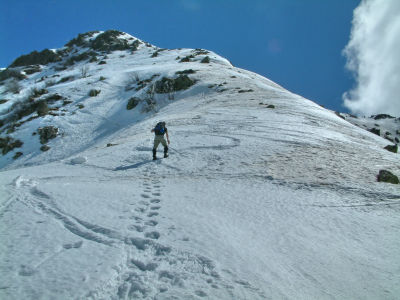How does nature 'preserve' the bodies of animals and humans for thousands of years?

In the long history of the earth, a huge number of creatures have appeared and have become extinct, but the bodies of some creatures, dung and footprints have been
Frozen mammoths, bog men and tar wolves: Ways nature preserves prehistoric creatures | Live Science
https://www.livescience.com/how-nature-preserves-prehistoric-creatures.html
◆ 1: Freeze
One of the best ways to preserve an animal's body is to 'freeze.' Low temperatures prevent the growth of microorganisms that break down rotten meat, thus stopping the body from rotting. In fact, mammoths and foals have been found in permafrost such as Siberia, and mummies of 'animals that may be in the process of evolving from wolves to dogs' have also been found.
A mummy that may be an 'evolving species from a wolf to a dog' can be found in permafrost in good condition-GIGAZINE

Animals found in permafrost are said to not only preserve their bodies, but also retain food in their stomachs, indicating that their bodies froze rapidly to prevent spoilage. I will. In addition, not only animals but also humans may be preserved in a frozen state, and the bodies of mountaineers who died on the way remain in steep mountains such as Everest, and died in the Alps around 3300 BC. Iceman , a male mummy, has also been discovered.
◆ 2: Sink in peatlands
In addition to keeping the temperature low by freezing, there is also a way to prevent the decay of body tissues by 'keeping oxygen-free'. Petebog ( flark), which is a swamp where acidic peat is accumulated, has conditions such as strong acidity, low temperature, and oxygen deficiency, so if the skin and internal organs of the animal that sank to the bottom are preserved for a long time That thing. In addition, the chemical substances released by the moss that grows on the surface of the swamp also play a role in stopping the growth of bacteria.
Mummified bodies in flark areas are called bog bodies . In recent years, the bodies of Russian and German soldiers who died in World War I have been found, and in the old ones, many BC bodies have been found.
One of the most famous bog bodies is the Tollund Man , discovered in Denmark in 1950. The first person to discover Tollund Man was a civilian who had cut out peat, but he thought that he might have died recently because the body was preserved so that the facial expression of the body could be clearly seen. However, subsequent radiocarbon dating estimated that Tollund Man died around 400 BC, the beginning of the Iron Age.
Tollund Man's estimated age is about 40 years old, with well-remaining internal organs, and it turns out that the last meal was like porridge with vegetables. A braided leather strap was wrapped around Tollund Man's neck, and the cause of death is believed to have been strangulation, but because his eyes and mouth were closed after his death, he was not a criminal but a religious sacrifice. It is believed that it was likely.
The picture below is the head of Tollund Man preserved in the museum. At that time, there was not enough technology to preserve the whole body, so it is said that only the head is cut and the replica body is now connected.

by
In addition to human bodies, dairy products called bog butter have also been found submerged in peatlands. Bog butter is buried in peat in a wooden container, and this custom can be traced back to the Iron Age. The theory was that butter was buried in peat for religious reasons, the theory that the flark was buried for storage because it is a suitable place for food preservation, and the purpose was to ripen or ferment it to give it a unique flavor. There is also a theory that.

by
◆ 3: Sink into the tar pit
In some areas, tar pits , which are natural asphalt ponds, existed, and animals stuck in sticky tar could not get out of it and died as they were. Animal bones stuck in tar pits have been preserved for thousands to tens of thousands of years and are beginning to be excavated in modern times.
The La Brea Tar Pit in Los Angeles, California is a place where many bones of ancient animals have been found, including the bones of a woman 9000 years ago. According to the La Brea Tar Pit Museum , where the found bones are on display, more than 3.5 million specimens have been found since 1913, and work will continue to discover new relics.
More than 600 animals and plants have been found in The La Brea Tar Pit, but most of them are bones of large animals, and most of them are carnivorous animals such as American lions and dire wolves.

Related Posts:
in Science, Posted by log1h_ik







